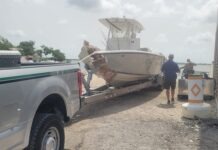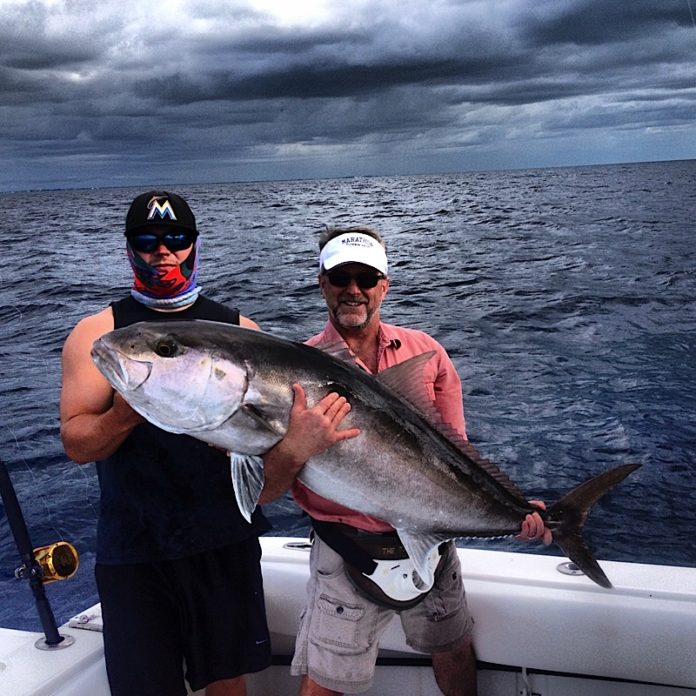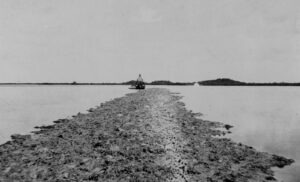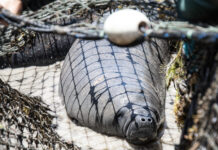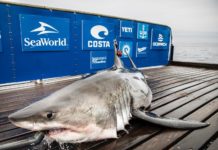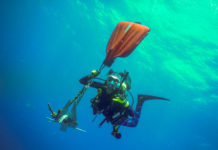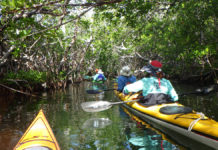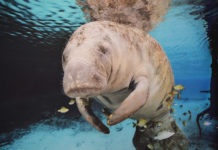Finally, the winds have died down and we‘ve gotten some nice chilly winter weather. Hopefully you’ve gotten the chance to head out on the water over the past few days, because it has been gorgeous! The seas are flat and the water clarity is unbelievable. Areas that rarely have good visibility, have been crystal clear. Having those glass-like conditions have given fisherman, and myself, an opportunity to find some new honey holes.
Cold fronts are a necessity for good fishing. They lower the temperature of the water and that gets a variety of fish to migrate south and swim our way. For example, species like sailfish, kingfish and cobia will continue to populate our Middle Keys waters as the cold fronts push through.
Last week aboard the Big Game we had our best success live baiting or flying kites for sails between 100-200 feet of water, catching all of our fish on live ballyhoo, pilchards and cigar minnows. I slow troll the deep edge of the reef with a spread of live baits, using any leader between 30-50 pounds. Ballyhoo have been showing up in good numbers in the Upper Keys, and in the upper Middle Keys, so don’t forget to bring the cast net and hair hooks along to try and catch your hoos.
In addition to the sailfish bite, the colder conditions also pushed the kingfish out front into the Atlantic. We’ve been having success targeting big kings on the patches, the edge of the reef, and on the wrecks. One of the great things about fishing for kingfish is that you don’t always need live bait, which makes them accessible to recreational anglers who are unable to throw a cast net, or sabiki their own bait.
While live baiting is still my favorite kingfishing technique, dead baits (even pre-rigged), as well as lures will produce good results under the right conditions—mainly when it’s windy and the fish are spread out. When conditions are calm dead baits will work, but live baits will usually lead to more fish.
Whether live baiting or trolling, or using butterfly jigs on the wrecks, remember to work your baits and lures at various depths throughout the columns. When drifting live baits we like to put a few rods on the surface on the flat line, and one or two baits down deep on the conventional rods. Spreading out your baits gives you a much better chance of locating the fish. If you happen to be anchored up on the reef or Hawk’s Channel, it’s always a good idea to put the kite up with the biggest bait in the live well. My bait of choice to catch a kingfish with this method is a big blue runner or a small bluefish.
Another thing to consider when targeting kingfish is to ignore the misconception that they will eat any bait that’s presented to them. This is not the case. Using a lighter mainline and wire leader will almost always result in more strikes. Plus, kingfish are one of the most thrilling fish to catch on light tackle. They got the nickname “smokers” for a reason, and when you watch a big king smoke a ton of line from your reel you’ll know why. Trust me; don’t go too heavy with your kingfish setup. You’ll catch more fish, and have more fun the lighter you go.
Cobia have been showing up in big numbers on the Oceanside. Most of the fish are found down deep following the rays. To catch these cobias, you need the perfect conditions, low winds, water clarity, and most importantly, a boat with a tower. Cobias often travel in schools ranging from 5 fish to 100. Overall, cobias in the ocean will typically be larger than cobias found in the gulf. This time of year, I always keep a rod with a bucktail jig ready to pitch if I happen to come across cobia while I’m running.
On the other side of the islands we’ve been seeing an excellent bite for a variety species. On the Gulf wrecks we’re still catching good numbers of cobia, while Florida Bay has been a hot bed for Spanish mackerel, speckled trout, jacks, pompano, and grouper (just remember grouper season is closed).
- Two anglers heft a monster amberjack they caught while fishing aboard the Big Game recently. Cold fronts are a necessity — they push the big fish into our relatively warmer waters to be scooped up by fishermen.

